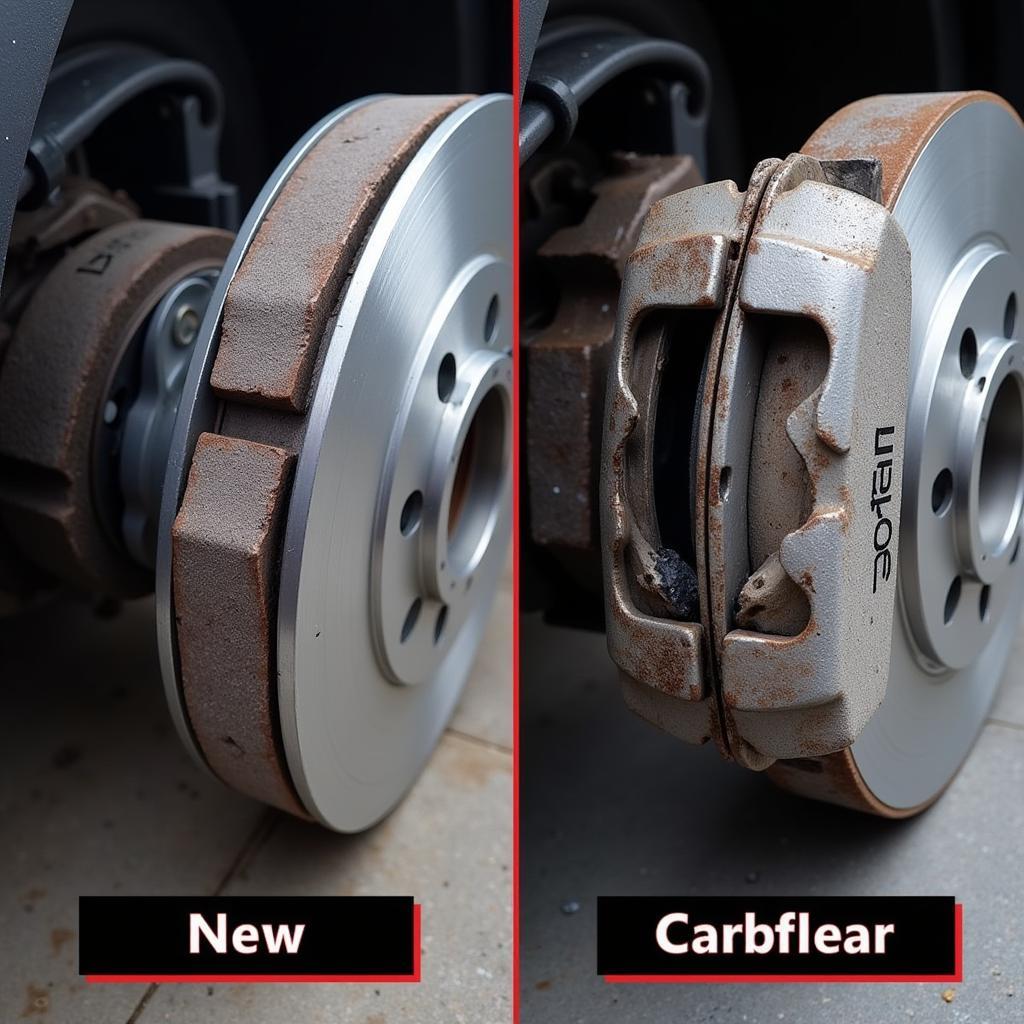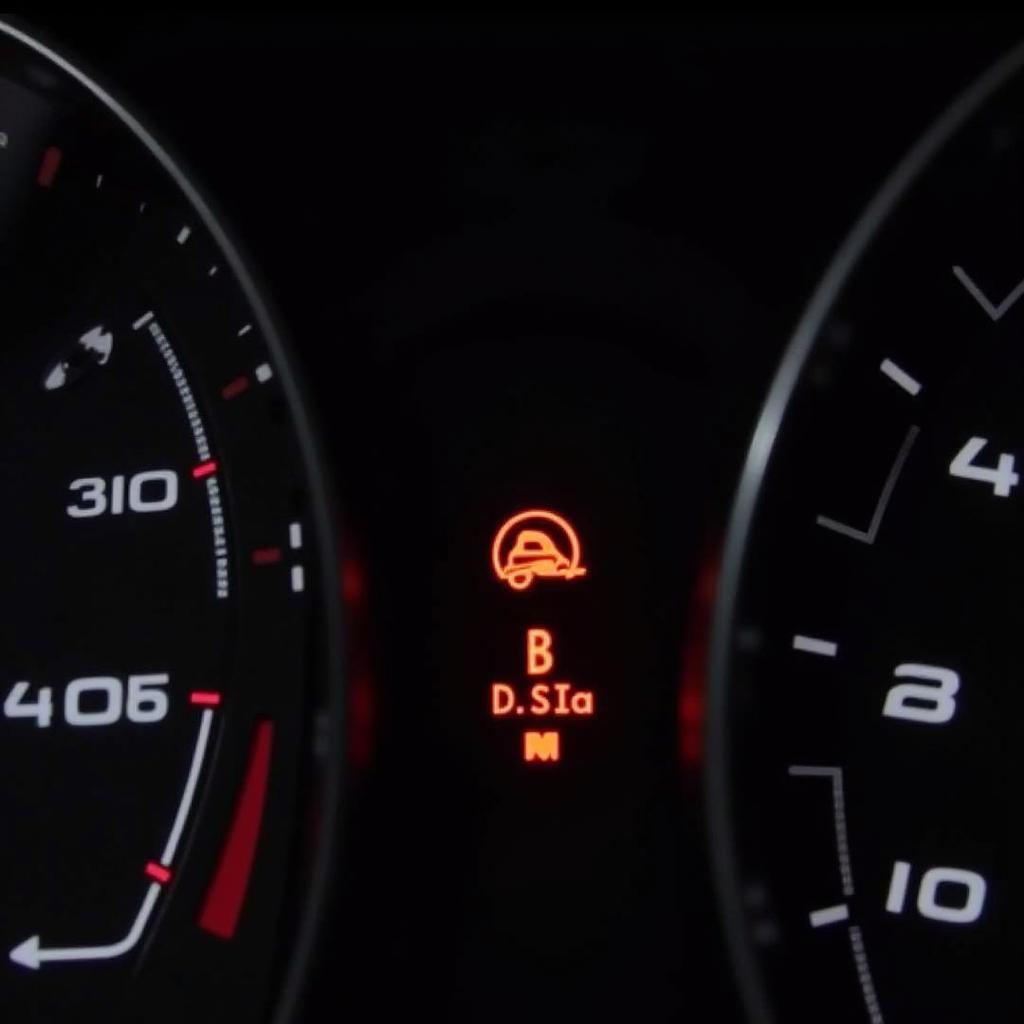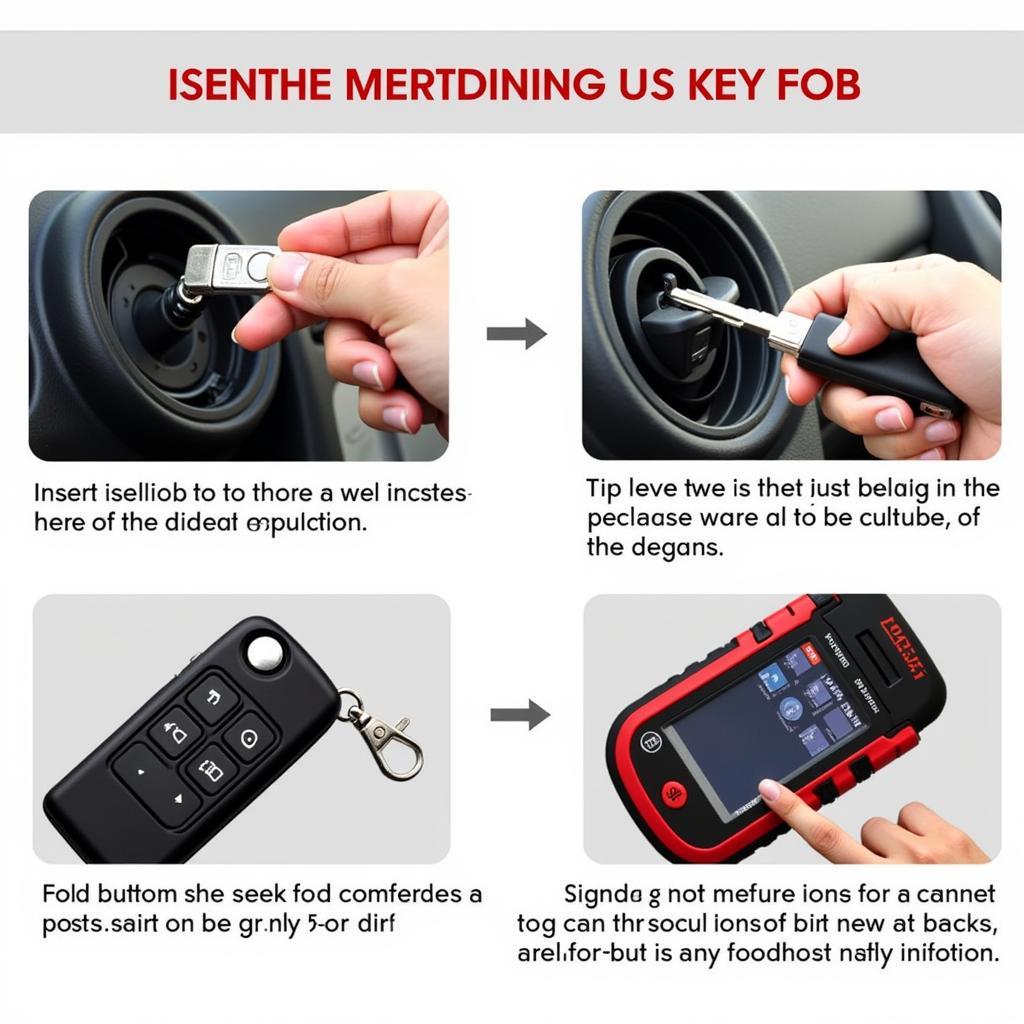The Audi brake pad warning symbol, a yellow circle with parentheses on either side and an exclamation point in the middle, illuminating on your dashboard is never a welcome sight. It typically means your brake pads have worn down and need replacing soon. However, there are other reasons this light might appear. This article will discuss what the Audi brake pad warning symbol means, the potential causes, and how to address them.
Understanding Your Audi Brake Pad Warning Light
Your Audi is equipped with sensors in the brake system that monitor the brake pad’s thickness. Once the pads wear down to a certain level, the sensor triggers the brake pad warning symbol on your dashboard, alerting you to schedule a brake inspection.
Expert Insight:
“Many car owners mistakenly believe the warning light means they need immediate brake service. While it’s crucial not to ignore the warning, it’s typically safe to continue driving for a short period, allowing you time to schedule an appointment.” – David Miller, Senior Automotive Technician at German Auto Repair
Common Causes of an Illuminated Brake Pad Warning Light
While worn brake pads are the most common reason for the brake pad warning light, several other factors can contribute to the issue:
- Worn Brake Pad Sensor: The sensor itself could be faulty or damaged, triggering the light even with sufficient brake pad material.
- Low Brake Fluid: Brake fluid is essential for transferring force from the brake pedal to the calipers, activating the brakes. Low brake fluid, often caused by a leak, can trigger the warning light.
- Electrical Issues: Problems with the wiring harness, connectors, or the instrument cluster can cause false warning lights, including the brake pad warning symbol.
Troubleshooting an Audi Brake Pad Warning Symbol
If your Audi’s brake pad warning symbol illuminates, you can take the following steps to troubleshoot the problem:
- Check Your Brake Pads: Visually inspect your brake pads through the spaces between the wheel spokes. If you see less than ¼ inch of brake pad material remaining, it’s time for a replacement.
- Inspect Brake Fluid Level: Locate the brake fluid reservoir under the hood. Check the fluid level, ensuring it falls between the minimum and maximum lines. If it’s low, there might be a leak.
- Examine Brake Pad Sensor: Inspect the brake pad wear sensor for any damage or debris. If you notice any issues, the sensor may need replacing.
When to Seek Professional Help
While visually checking your brake pads and fluid level is a good starting point, it’s crucial to remember that brake systems are complex and require specialized knowledge for accurate diagnosis and repair.
Expert Insight:
“Attempting to diagnose or repair brake problems yourself can be dangerous. If you are not comfortable working on your vehicle, it’s always best to take it to a qualified mechanic.” – Sarah Jones, ASE Certified Master Technician
If you are uncomfortable inspecting your brakes or cannot determine the cause of the warning light, take your vehicle to a qualified mechanic specializing in Audi vehicles.
Importance of Timely Brake Pad Replacement
Timely brake pad replacement is vital for your safety and the longevity of your Audi’s brake system. Ignoring the brake pad warning light can lead to:
- Reduced Braking Performance: Worn brake pads significantly reduce your Audi’s ability to stop effectively, increasing the risk of accidents.
- Damage to Rotors: Driving with worn brake pads can cause damage to the brake rotors, leading to costly repairs.
- Brake Failure: In extreme cases, ignoring the warning light can result in complete brake failure, putting you and others at serious risk.
Preventing Future Brake Pad Issues
Taking preventative measures can help extend the life of your brake pads and avoid unexpected issues:
- Smooth Braking: Avoid harsh braking whenever possible. Gradual braking reduces wear and tear on your brake pads.
- Regular Inspections: Schedule regular brake inspections with a qualified mechanic to identify potential issues early on.
- Quality Brake Pads: Use high-quality brake pads designed for your Audi model to ensure optimal performance and longevity.
 New Audi Brake Pads and Rotors
New Audi Brake Pads and Rotors
Audi Brake Pad Warning Symbol: Don’t Ignore It
The appearance of the Audi brake pad warning symbol, though potentially alarming, is your vehicle’s way of communicating a potential problem. Understanding what this symbol means, recognizing the potential causes, and knowing how to address them can save you time, money, and most importantly, keep you safe on the road.
FAQs About Audi Brake Pad Warning Symbol
1. Can I drive my Audi with the brake pad warning light on?
It’s not advisable to drive for extended periods with the brake pad warning light illuminated. While you might not need immediate service, it’s crucial to schedule an inspection soon.
2. How much does it cost to replace Audi brake pads?
The cost varies depending on your Audi model and the type of brake pads used. Generally, expect to pay between $150 and $300 per axle for parts and labor.
3. How often should I replace my Audi’s brake pads?
Brake pad lifespan varies greatly depending on driving style and conditions. As a general rule, have your brake pads inspected every 10,000 miles and replaced when necessary.
4. Can I replace my Audi’s brake pads myself?
While possible, it’s recommended to have brake pad replacements performed by a qualified mechanic. Brake systems are complex and require specialized tools and knowledge.
5. What is the difference between the brake pad warning light and the brake system warning light?
The brake pad warning light specifically indicates worn brake pads. The brake system warning light, often red, suggests a more serious issue, such as low brake fluid or a problem with the ABS system.
6. How can I reset the brake pad warning light after replacing the pads?
The warning light should reset automatically once the new brake pads are installed and the ignition is turned on. If it doesn’t, you might need a mechanic to reset it manually.
7. My Audi’s brake pad warning light is flashing. What does this mean?
A flashing brake pad warning light usually indicates a more severe problem with the brake system, such as a faulty ABS sensor or a problem with the electronic brake-force distribution system.
If you are experiencing this issue, it’s crucial to have your vehicle towed to a qualified mechanic immediately.
Remember, your safety is paramount. When it comes to brakes, it’s always better to err on the side of caution and seek professional assistance.
 Dashboard Warning Lights on an Audi
Dashboard Warning Lights on an Audi
Disclaimer: This article is for informational purposes only and should not be considered professional automotive advice. Always consult a qualified mechanic for any brake system concerns or before attempting repairs yourself.


